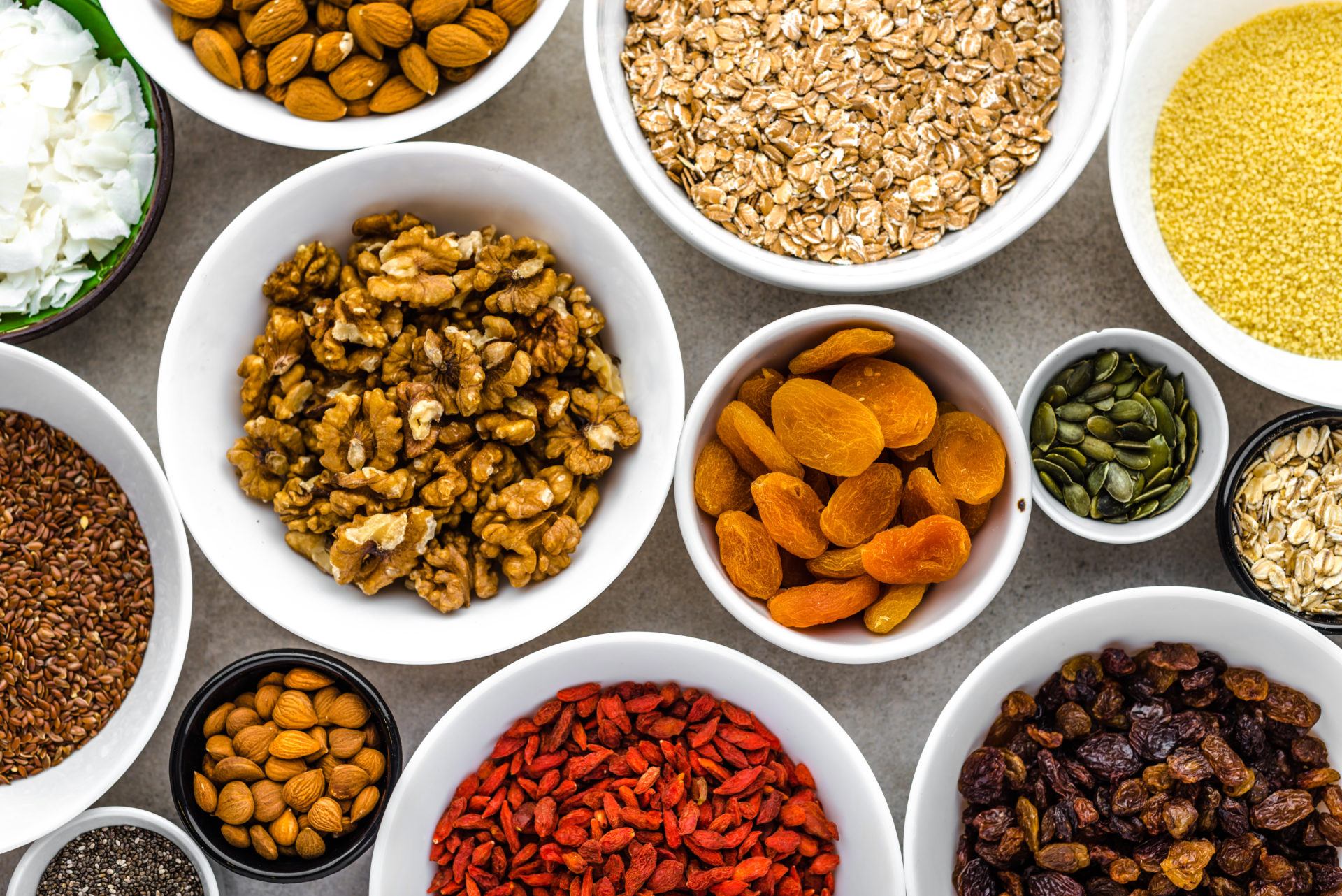This is one of our favorite sales, so we decided to do it twice this year! This week enjoy 20% off Bulk Foods, now is the perfect time to give your pantry a refresh before Fall arrives! In our ever-growing, fast-paced world, it’s super easy to wind up buying everything you eat in some sort of package, and that means extra waste plus extra cash out of your pocket. Buying in bulk is a fun way to reduce your waste and maximize your spending, and with a little practice, it’s as easy as pie!
Why Buy Bulk?
There a few very concrete reasons to buy in bulk and few more nebulous ones, so let’s start with just the facts!
Bulk foods create a lot less waste than foods in single-use packages. It does this in two ways: first, since you’re only buying as much food as you know you’ll need, it cuts down on the food waste your household will produce. According to the USDA, Americans wasted approximately 133 billion pounds of food just in the past year alone. This creates a huge strain on the environment, both to produce the food and then to dispose of it; by buying food in bulk, you ensure that you’ll only get what you can actually use. Second, buying bulk foods also means you’re not putting more single-use containers into the environment. Almost all food today comes in some sort of package, and whether it’s plastic, cardboard, or glass, that package is eventually going to wind up in the trash. By using jars and bags that can be refilled and reused, you will avoid putting more containers into the environment!
Bulk foods also tend to be much cheaper than their pre-packaged counterparts. It’s well known that businesses will markup the price on a product simply because the product has their brand name and label attached; sometimes these markups are small, other times you might end up paying almost double for a product simply because it’s branded! Not so in bulk. Instead, you get to skip the markups and only pay for the product itself, saving you lots of money on high-cost items like organic nuts and dried fruits. Additionally, bulk foods cost less to ship, meaning you’ll really just be paying for the food you’re eating. That being said, some bulk items can be just as expensive if not more expensive than their packaged counterparts – check the price per ounce for packaged items you buy regularly and compared them to the price per pound on bulk items. This way you know for sure you’re getting the best price possible.
Additionally, buying in bulk means you get the freshest product possible! The product in our bulk bins is constantly being cleaned out and refilled, so you know that the product you’re getting is at peak freshness, even if it’s dried. This translates to less cooking time and better flavor, not mention a slightly increased shelf life, since you’re getting it as fresh as possible. And it’s fun to boot! Bulk selections tend to have all manner of funky health foods and interesting spices, and because you can buy in as small or large a quantity as you desire, you can go on a food adventure without breaking the bank or wasting anything!
Storing in Bulk
The first step to begin buying bulk products is to get some reusable glass jars and cotton mesh or muslin bags. These can be jars saved from previous purchases or jars specifically designed to be refilled – these will usually come with a band to create an airtight seal, keeping your food fresher longer. You’ll want a variety of shapes and sizes, particularly if you plan on switching entirely to bulk shopping. Many bulk sections will have items ranging from beans and nuts to cookies, coffee, and spices, so having a bit of a selection of containers will let you purchase and store exactly what you need exactly how you need it.
While jars are essential for wet goods, you can also use reusable cotton bags to purchase bulk goods. These are fantastic if you don’t want or don’t have the ability to cart a bunch of jars to and from the grocery store. They’re also a cinch to clean and can be used to hold produce items you would ordinarily get in a plastic container. Mesh bags will suit produce like limes, apples, or even peppers, while muslin bags are better for things like nuts, beans, or smaller produce items, such as berries. And if you’re crafty, you can even make them yourself out of old, cotton t-shirts!
Tare It Up
Once you’ve got your reusable jars and bags secured, it’s time to find the tare! And no, we’re not saying you should go hunting for holes in your bags and jars – the tare weight, or unladen weight, is actually how much your containers weigh without anything inside them! This is crucial because otherwise you will wind up paying for the weight of your jars and bags in addition to the items actually inside them.
Simply weigh the jar or bag while completely empty and clean, you can use any simple table-top scale to do this or you can even have the store weigh your containers for you, just make sure to do it BEFORE you start shopping. Once you’ve gotten the tare weight, simply label each jar or bag with either a stick-on label or by writing directly on them in permanent marker. The checker will either account for this weight before charging you or will subtract it from the total weight, so you only pay for what you’re actually buying.
Labeling is Key
With a standard, packaged product, your checker will likely have all the information they need directly printed on it, but with bulk foods, it’s a little more complicated. Bulk products are usually associated with a specific PLU (price look up) number. This allows the checker to plug in a code and charge you without needing any other information. However, depending on the size of the bulk section, there might be hundreds of these PLU’s, many of which will be very similar.
When you go to fill up your containers, label them either permanently or temporarily with both the PLU number and the actual name of the product as it appears on the bin. This way, if you accidentally write down the wrong PLU – and it happens, frequently – the checker can at least have someone go and get the correct PLU. They may even be able to look it up by name, which saves them the hassle of hunting down a price and saves you time, plus you’re guaranteed to be charged correctly!
Check the Bins
Grocery stores are required to post the information that normally appears on packages on their bulk bins. This includes things like nutrition facts and ingredient lists, but it also includes cooking instructions that are specific to that product. Checking nutrition labels is a good idea in general, but it becomes extra important when you can’t bring the labels home with you. Items like pasta, soup mixes, and beans often have specific cooking times and methods; you may be able to find this information online, but it’s much easier to simply take a glance at the bin labels before you head out of the store. If you tend to reuse containers for certain products, consider writing out the instructions and permanently labeling your containers, or alternatively, photograph the bin labels on your phone to reference later!
Now, while some of these instructions may be entirely necessary to achieve the best results with a product, some of them are extremely basic. This is where your creativity can come into play! Once you’ve followed the directions once or twice, play around with seasonings and additions – for instance, a bin label for pinto beans may only tell you how much water to use and how long to cook them so they’re edible. The rest is up to you, experiment with different spices and flavorings, and since you only need to buy the amount you need, there’s no fear of waste!
Buying food in bulk can be intimidating to those who haven’t tried it before, but once you start, you’ll be hooked! Whether it’s the freshness or the savings that get you or the knowledge that you’re doing your part to help the environment, there’s no end to the satisfaction that can from buying in bulk. And there’s never been a better time to start – come into Oliver’s this week only for 20% off everything in our bulk food section, you’ll wonder why you didn’t start bulking up sooner. Stop by today!
(Savings excludes bulk coffees)


No comments yet. Add the first comment